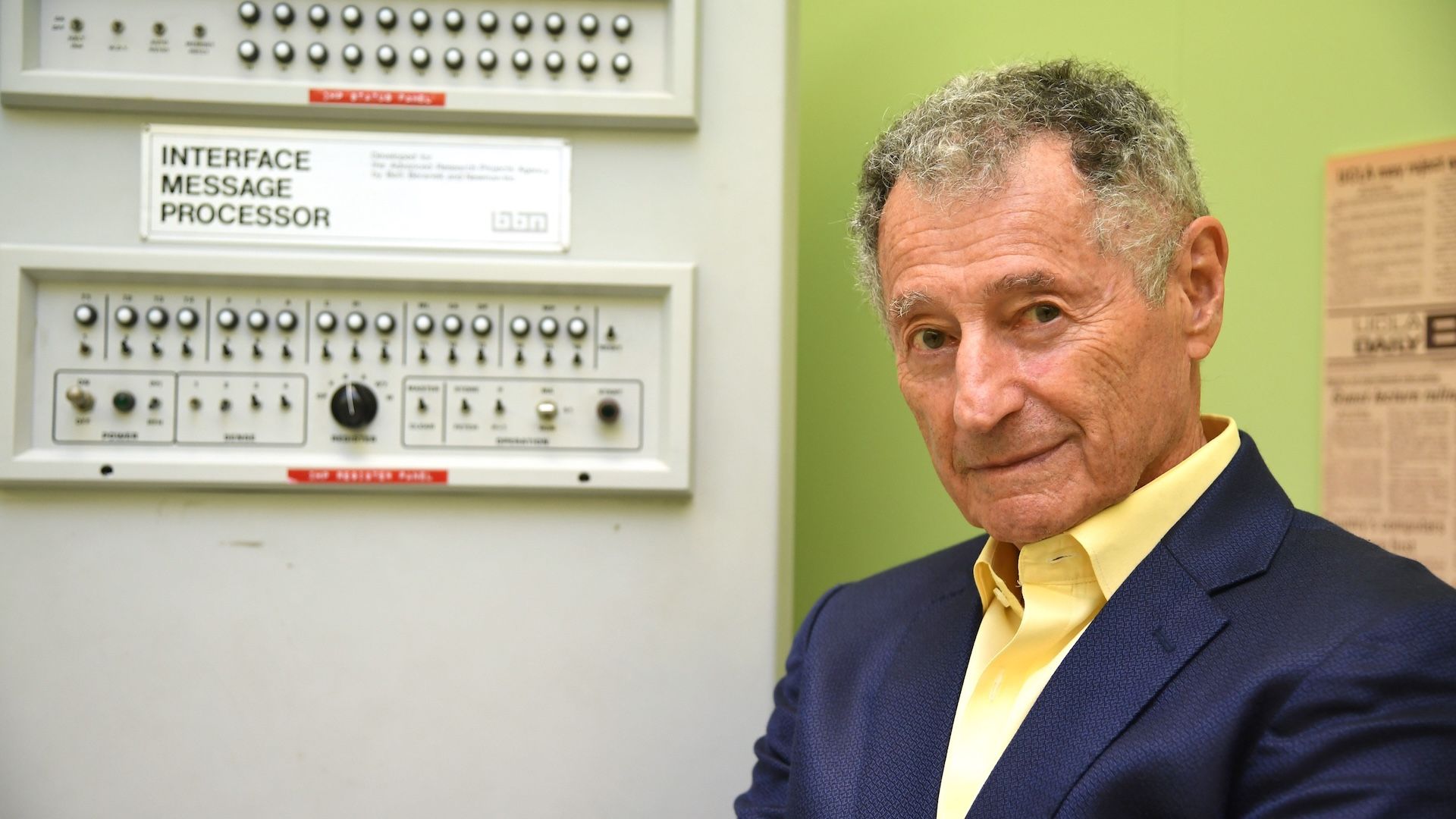Quick facts
Milestone: First computer-to-computer transmission
When: 10:30 p.m. on Oct. 29, 1969
Where: Los Angeles to Menlo Park, California
Who: Graduate student Charley Kline to computer engineer Bill Duvall
Late one evening, UCLA graduate student Charley Kline sat in front of a refrigerator-sized computer and sent the message “lo” to a rack of computers operated by systems engineer Bill Duvall at the Stanford Research Institute (SRI), hundreds of miles away.
The two computers were part of a four-computer network that made up the first Advanced Research Projects Agency Network (ARPANET).
The notion of computers communicating was part of a grand vision to “augment human intellect,” but ARPANET was ultimately funded for a more practical purpose: to enable the U.S. government to communicate in the wake of a nuclear attack. Although telephone lines would likely be intact in that case, the major switching centers could be destroyed, the military worried.
In 1964, RAND Corp. scientists Paul Baran and Sharla Boehm sent a memo proposing a solution: a “distributed network” that involved “hot potato” switching so that no single node would be crucial to the system’s functioning.
From there, the military agency funded a project to create such a network. For the system to work, it needed a way to break up messages from a sender into smaller portions that were then reassembled at the destination. Boehm and Baran simulated this process, which would eventually become known as packet switching, using a program written in the computer language Fortran.
Even before ARPANET was realized, however, the scientists involved in the project clearly saw the potential of the concept. Baran, for instance, envisioned that by the year 2000, people would be able to do their shopping from home using a TV.
In 1968, ARPANET was approved, and by the summer, scientists at the University of California, Santa Barbara; SRI; UCLA; and the University of Utah began building the infrastructure to allow their computers to communicate using these packets.
For the first transmission, each computer at these locations had a separate, “mini-computer” called an interface message processor (IMP), which would evolve into the routers of today. The IMPs were meant to break up the messages into smaller chunks and send them to the IMP at the receiving end, which would then reassemble them and echo them to the receiving terminal.
On the storied evening the message was sent, Kline and Duvall were on the phone with each other, confirming when each letter arrived. But the system crashed because the Stanford computer was expecting the data to be transmitted at 10 characters per second, while ARPANET had an unprecedented speed of 5,000 characters per second. This overloaded the “buffer” in the Stanford computer, according to BBC Future.
“It was like filling a glass with a fire hose,” Duvall told BBC Future.
Duvall identified the problem and got the system up and running an hour later.
Almost immediately, researchers realized the potential of the system.
“As of now, computer networks are still in their infancy, but as they grow up and become more sophisticated, we will probably see the spread of ‘computer utilities,’ which, like present electric and telephone utilities, will service individual homes and offices across the country,” Leonard Kleinrock, a computer science professor who was in charge of that UCLA node, said in a statement at the time.
ARPANET would be tied to its military roots until 1981, when the military spun off its own MILNET. And while the term “internetwork” was coined in a 1970s paper to describe a standardized protocol for transmitting and receiving data, the internet itself technically wasn’t born until 1983, when ARPANET switched over to that protocol.
